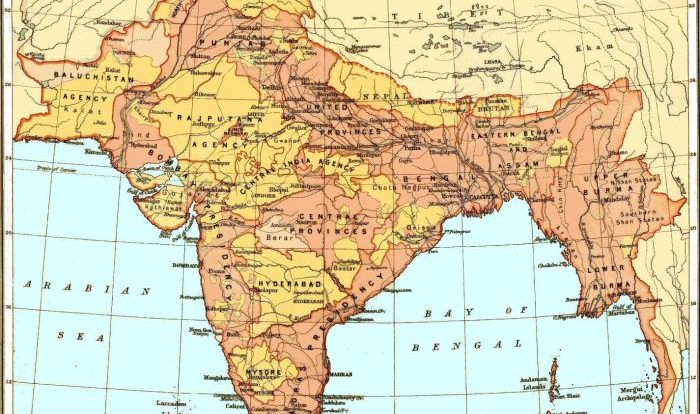Guns germs steel chapter summary – Prepare to embark on an extraordinary journey with our Guns, Germs, and Steel Chapter Summary. This meticulously crafted guide delves into the profound influence of geography, domestication, technology, and societal organization on the development of human civilizations. Get ready to unravel the intricate tapestry of history and discover the captivating story of our origins.
Our exploration begins with the profound impact of geographical advantages, revealing how location played a pivotal role in shaping the destinies of nations. We’ll trace the significance of domesticating plants and animals, a transformative process that laid the foundation for settled societies and agricultural advancements.
The role of technological innovations will be examined, showcasing how tools, weapons, and transportation fueled the rise of civilizations.
Geographical Advantages
The theory of geographical advantages posits that the physical environment significantly influences the development and prosperity of civilizations. Civilizations located in regions with favorable geographical features, such as fertile soil, navigable waterways, and defensible terrain, tend to thrive, while those in less advantageous locations may face challenges.
Geography played a crucial role in shaping the development of different civilizations. For instance, the fertile lands of Mesopotamia and the Nile Valley allowed for the emergence of early agricultural societies, while the mountainous terrain of Greece and the peninsular location of Italy contributed to the development of maritime trade and city-states.
Favorable Geographical Locations
- Mesopotamia:Located between the Tigris and Euphrates rivers, Mesopotamia had access to fertile soil for agriculture, navigable waterways for transportation, and defensible terrain protected by natural barriers.
- Nile Valley:The annual flooding of the Nile River deposited rich soil along its banks, making it one of the most fertile regions in the world. The river also served as a vital transportation route and provided a source of fish and other resources.
- Greece:The mountainous terrain of Greece led to the development of independent city-states, each with its own unique culture and government. The proximity to the sea allowed for maritime trade and cultural exchange.
Unfavorable Geographical Locations, Guns germs steel chapter summary
- Sahara Desert:The vast and inhospitable Sahara Desert presented significant challenges to human settlement and agriculture, limiting the development of civilizations in the region.
- Central Asia:The arid climate and rugged terrain of Central Asia made it difficult for large-scale agriculture and hindered the development of major civilizations.
- Amazon Rainforest:The dense vegetation and lack of navigable waterways in the Amazon Rainforest posed obstacles to transportation and communication, limiting the growth of complex societies.
Domestication of Plants and Animals
The domestication of plants and animals was a pivotal moment in human history, marking the transition from nomadic hunter-gatherer societies to settled agricultural communities. This fundamental shift laid the foundation for the development of civilizations and technological advancements.
The process of domestication involved selectively breeding wild species for desirable traits, such as increased size, docility, and productivity. Over time, these selective breeding practices resulted in the creation of domesticated plants and animals that were better suited to human needs.
Plant Domestication
Plant domestication allowed humans to cultivate a reliable food source, reducing their dependence on unpredictable hunting and gathering. It also led to the development of specialized farming techniques, such as irrigation and crop rotation, which increased agricultural productivity and supported larger populations.
- Mesopotamia:Domestication of wheat, barley, and legumes.
- China:Domestication of rice and soybeans.
- Mesoamerica:Domestication of maize (corn), beans, and squash.
Animal Domestication
Animal domestication provided humans with a source of food, transportation, and labor. Domesticated animals also played a crucial role in warfare and the expansion of empires.
- Eurasia:Domestication of horses, cattle, sheep, and goats.
- Americas:Domestication of llamas and alpacas.
- Africa:Domestication of donkeys and chickens.
The domestication of plants and animals had a profound impact on human history, enabling the development of agriculture, settled societies, and the rise of civilizations.
Technological Advancements
Technological advancements have played a pivotal role in shaping human history. The development of tools, weapons, and transportation has influenced the rise of civilizations and the balance of power among them.
The invention of basic tools, such as the axe and the spear, allowed humans to hunt more efficiently, clear land for agriculture, and defend themselves against predators. As technology advanced, so did the complexity of tools and weapons. The development of bronze and iron metallurgy led to the creation of more durable and effective weapons, which gave certain civilizations a significant advantage in warfare.
Transportation and Communication
The development of transportation technologies, such as the wheel and the sail, enabled humans to travel and trade over long distances. This led to the exchange of ideas, goods, and technologies, which further fueled technological advancements. The invention of writing and the development of communication systems, such as the postal service, facilitated the spread of knowledge and the coordination of large-scale projects.
Social and Political Organization
Social and political organization played a crucial role in the development of civilizations. Societies with strong social and political structures were able to mobilize resources, maintain order, and foster innovation, which led to advancements in technology, culture, and economic prosperity.Different
forms of government, social structures, and economic systems had varying impacts on the trajectory of societies. Centralized governments, such as empires, could mobilize large populations and resources for large-scale projects like infrastructure, military campaigns, and scientific research. Hierarchical social structures, with clear lines of authority and division of labor, facilitated specialization and the accumulation of knowledge.
Market-based economic systems encouraged competition and innovation, leading to technological advancements and economic growth.For example, the Roman Empire, with its centralized government, strong military, and advanced infrastructure, was able to maintain peace and stability over a vast territory, allowing for cultural exchange and economic prosperity.
The Chinese Han dynasty, with its meritocratic bureaucracy and emphasis on education, fostered a culture of innovation and technological advancement. The Inca Empire, with its complex system of roads and communication, was able to effectively administer a vast territory and support a large population.
Cultural Exchange and Diffusion: Guns Germs Steel Chapter Summary
Cultural exchange and diffusion are the processes through which ideas, technologies, and beliefs spread from one culture to another. This exchange has played a significant role in human history, shaping the development of different civilizations and leading to the spread of knowledge and innovation.
Exchange of Ideas and Technologies
The exchange of ideas and technologies has been a driving force behind human progress. For example, the development of agriculture in the Middle East spread to other regions, leading to the rise of settled societies. The invention of the wheel in Mesopotamia was later adopted by other civilizations, revolutionizing transportation and warfare.
Spread of Beliefs and Values
Cultural exchange also involves the spread of beliefs and values. For instance, the spread of Buddhism from India to East Asia influenced the development of new religious traditions and philosophies. The spread of Christianity in Europe led to the establishment of new social and political structures.
Diffusion of Knowledge and Innovation
Cultural diffusion has facilitated the spread of knowledge and innovation. The Silk Road, a network of trade routes connecting East and West, allowed for the exchange of goods, ideas, and technologies. This led to the spread of papermaking from China to Europe, the introduction of gunpowder to the West, and the development of new forms of art and music.
Top FAQs
What is the main thesis of the Guns, Germs, and Steel theory?
The theory argues that the development of civilizations was primarily influenced by geographical advantages, the domestication of plants and animals, technological advancements, social and political organization, and cultural exchange.
How did geography play a role in the development of civilizations?
Geographical factors such as access to fertile land, navigable waterways, and natural resources provided advantages to certain civilizations, allowing them to thrive and expand.
What was the significance of domesticating plants and animals?
Domestication led to a reliable food supply, which supported population growth and the development of settled societies. It also enabled the specialization of labor and the emergence of complex social structures.

